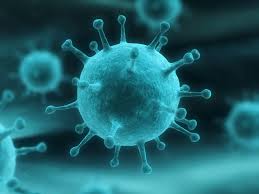The CDC has sent out an emergency advisory to doctors this week warning that 2 factors have set up the 2015 flu season to be more miserable and potentially more deadly than in years past.
First, the dominant strain of influenza virus in circulation is H3N2 and according to Tom Frieden, direct of the CDC, “We know that in seasons when H3 viruses predominant, we tend to have the worst flu years, with more hospitalizations from flu and more deaths from the flu.”
Making it worse, the flu vaccine given this year is considered a mismatch. Influenza viral characterization data indicates that 52% of viruses collected up to November 22, 2014 were antigenically different (drifted) from this year’s flu vaccine. It is important to note that although this year’s flu vaccine does not protect as well as years past, it still
protects against OTHER circulating flu viruses–and still offers better protection against this year’s flu than no vaccine.
What if I get flu-like symptoms?
More than ever, it is imperative you see your doctor within 1-2 days to get antiviral medications such as Tamiflu and Relenza which make the flu “milder and shorter,” according to Frieden. He called antivirals a “second line of defense” but said they need to be prescribed within the first couple days of symptoms.
In years past, only one in six people got Tamiflu or Relenza who needed it, Frieden said.
“Start anti-viral treatment as soon as possible!” CDC is recommending doctors not even wait for tests to come back before starting medicine.
Should I still get the flu shot?
CDC officials recommend a flu shot for everyone older than 6 months because even partial protection is better than nothing. All flu shots are designed to protect against three viruses. This year’s flu shots also protect against H1N1, which caused the swine flu pandemic in 2009-2010
If I had the flu shot, can I still get sick?
Even if you have gotten the flu shot, you can still get sick with flu-like illness because there are so many viruses that cause similar symptoms.
Can I get the flu from the flu shot?
Contrary to misinformation spread on the Internet and elsewhere, flu shots cannot cause the flu.
More details:
An excellent resource for clinicians is “Fluview” which is a national and regional level outpatient illness and viral surveillance dashboard, produced by the CDC. You can view this amazing dashboard here.
The below piece was written by Karen Kaplan for the LA Times:
“The flu vaccines in the U.S. are designed to prime the body’s immune system to fight three or four strains of influenza. This year’s vaccines protect against two types of influenza A viruses – one H1N1 and one H3N2 – as well as one or two influenza B viruses.
The CDC’s FluView report says that only one type of H1N1 virus has been tested since Oct. 1. It was a good match with the A/California/7/2009 strain in this year’s flu.
An additional 17 influenza B viruses have been analyzed, and they are good matches as well. Ten of them were of the Yamagata/16/88 lineage that’s in all North American vaccines, and the seven others were of the B/Victoria/02/87 lineage that’s in the quadrivalent versions of the vaccines.
But most of the flu strains subjected to laboratory testing have been of the H3N2 variety, according to the CDC. And slightly fewer than half matched the A/Texas/50/2012 strain that’s in the vaccines given in the U.S.
Most of the rest of the H3N2 samples were similar to a strain called A/Switzerland/9715293, which was picked for the flu vaccine for the Southern Hemisphere, according to the FluView report.
Flu watchers first detected these strains in the U.S. in March. By then, “it was already too late to include them in this season’s vaccine,” Frieden said.
It’s not clear that vaccine makers would have made the switch at that point, even if it were possible. Back then, the A/Texas strains were “still by far the most common of the H3N2 viruses,” he noted. The A/Switzerland strains appeared in “significant numbers” only in September, he said.
Peter Lipson, contributing to Forbes adds an excellent comment, “While concerning, this is not a disaster. First, very few samples have been tested so far. As the season progresses we’ll have more data to make judgements. If the current trends hold (and there’s no guarantee), the flu shot still covers nearly half the circulating viruses very well, and probably offers partial protection against the rest. Even with the “mismatch”, the flu shot still offers significant protection.”





